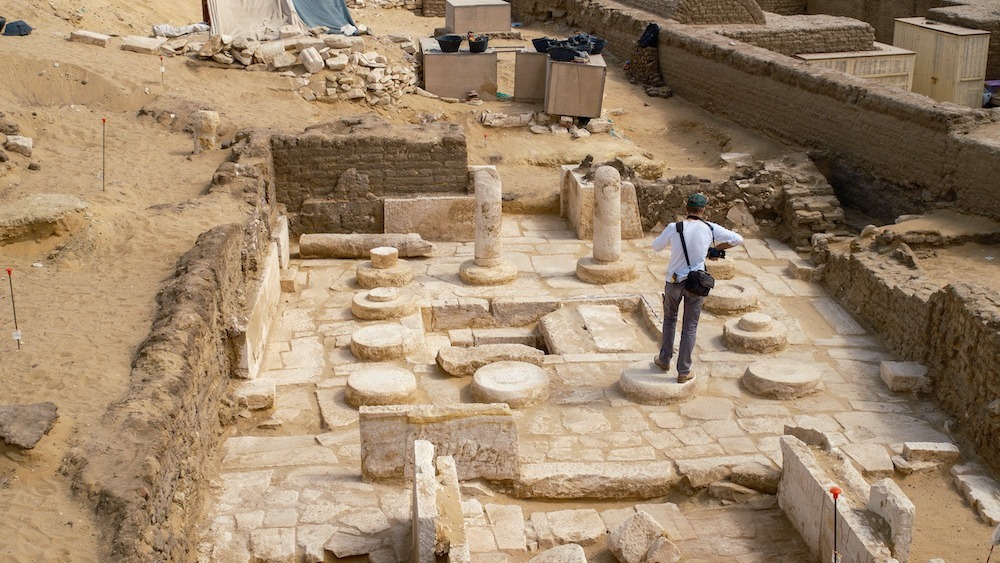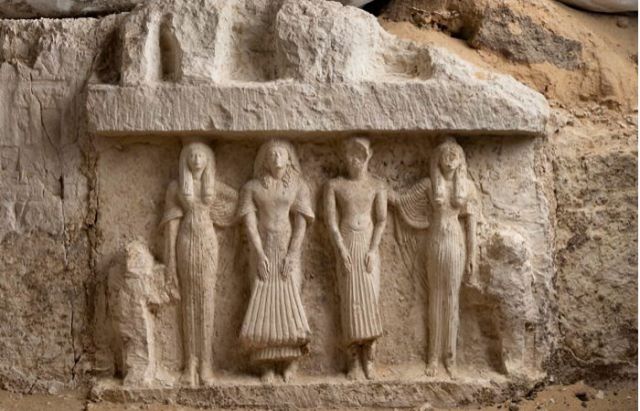Jan Bartek – AncientPages.com – As archaeologists continue to excavate the Saqqara necropolis in Egypt, new impressive findings are being made.
The Italian Dutch archeological mission from the Leiden Museum in the Netherlands and the Egyptian Museum in Turin have unearthed several ancient underground tombs and chapels at the site. One of the tombs belongs to an individual claiming to be a narcissist, the Egyptian Ministry of Tourism and Antiquities said in a press statement.

Credit: Egyptian Ministry of Tourism and Antiquities
During the excavation works, archaeologists unearthed the remains of Panehsy’s tomb, the steward of Amun Temple in the early Ramesside period.
“The new discovery sheds new light on the development of Saqqara Necropolis during the Ramesside period and introduces new individuals that were yet unknown in the historical sources,” said Mostafa Waziri, secretary-general of the Supreme Council of Antiquities.
Panehsy was put to rest in a tomb inside a “freestanding temple with a gate entrance, an inner courtyard with columned porticoes, and a shaft to the underground burial chambers, is situated north to the tomb of the famous Maya, the high-ranking official from the time of Tutankhamun. The mud brick walls of the upper structure are 1.5 meters high and embellished with decorated limestone revetment slabs. These show the colorful reliefs of the tomb owner and his wife Baia, who was the singer of Amun, along with several priests and offering bearers,” Ahram Online reports.

Credit: Egyptian Ministry of Tourism and Antiquities
A beautiful relief depicts “Panehsy worshipping the cow goddess Hathor. Beneath it, Panehsy and Baia sit together before an offering table. A bald man with leopard skin around his shoulders stands opposite the couple. This was the priest who took care of their mortuary cult, pouring out water, Christian Greco, director of the Museo Egizio in Turin explained.
As explained earlier in Ancient Pages, Egyptian priests, and priestess devoted their lives to the gods and goddesses. Some official gods like Horus, Bastet, and Amun were worshiped by the pharaoh and priests in large temples.
Lara Weiss, the curator of Leiden’s Egyptian and Nubian collection, informed that while excavating at the site, scientists discovered four smaller tomb chapels located to the east of Panehsy’s tomb, one of which is of the gold foil-maker of the treasury of the Yuyu, an ancient Egyptian High Priest of Osiris at Abydos, during the reign of pharaohs Ramesses II.
The tombs are well-preserved, and their walls bear high-quality, detailed, and stunning decorations.
“Although it is a relatively small tomb chapel, four generations of Yuyu’s family were venerated in beautiful colorful reliefs showing Yuyu’s funerary procession and the reviving of his mummy to live in the afterlife as well as the veneration of the Hathor cow and the barque of the local Saqqara god Sokar.
See also: More Archaeology News
Another notable find was made at the eastern side of Panehsy’s tomb, where a yet anonymous chapel with a very rare sculptured representation of the tomb’s owner and his family was discovered. The artistic style of the representation might have been inspired by the statues neighboring the tomb of Maya and Merit.
Written by Jan Bartek – AncientPages.com Staff Writer





